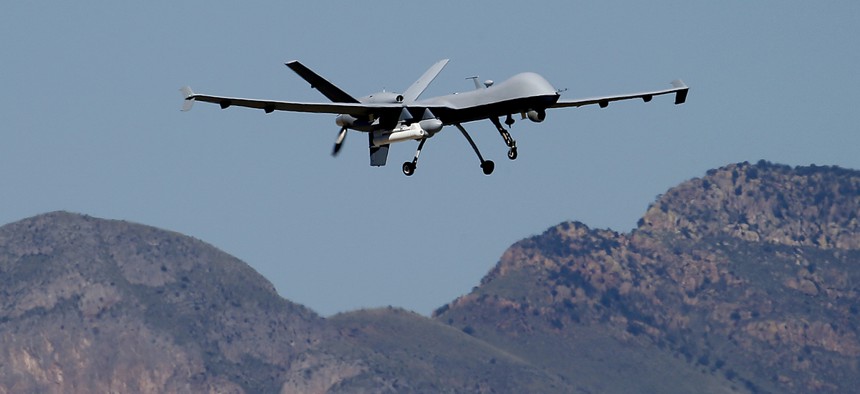Latest DHS Push in Silicon Valley: Drones for Border Patrol

A U.S. Customs and Border Patrol drone aircraft lifts off, Wednesday, Sept 24, 2014 at Ft. Huachuca in Sierra Vista, Ariz. Matt York/AP
Officers could use panels embedded in their uniforms to control the systems, DHS envisions.
The Homeland Security Department wants startups to help Customs and Border Protection use drones for surveillance and tracking.
As part of a broader effort to connect with commercial businesses in Silicon Valley, DHS is hosting an industry day focused on unmanned aircraft systems. The July 29 event, meant to lure nontraditional contractors into selling to the government, is slated to be held in Menlo Park, a well-known hub for tech giants and venture capital firms.
CBP, which prevents illegal trafficking and attempts to deter terrorists, could use drone technology to help "agents constrained by limited mobility and visibility," according to a notice posted on FedBizOpps.
DHS offered a few hypothetical systems that tech companies could help bring to fruition.
In one, a border agent could control a small unmanned aircraft using a "panel integrated into the forearm of his or her uniform."
» Get the best federal technology news and ideas delivered right to your inbox. Sign up here.
That panel might be a display that helps agents "see the raw data feed" from sensors embedded in the drone, or geospatial information pointing out targets or areas of interest, the notice said. Agents could use buttons or sensors on the forearm panel to control the drone, and could receive notifications visually or aurally, "with the mode and intensity of the notification based on the kind of event" the system is reporting.
Another system might use voice control: An agent could command the drone using a headset or ear piece, telling it to fly up or down, near a target, or to return to the agent, the notice said.
"The technology would be able to follow natural language commands (e.g., 'go there,' 'follow that,' 'come back')," DHS wrote, "and has some mechanism to distinguish when the agent is directing the sUAS or speaking to another actor.
DHS plans to make first-round awards to eligible companies for about $50,000 to $200,000, over a period of about three to six months.





